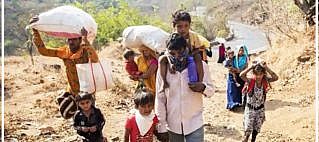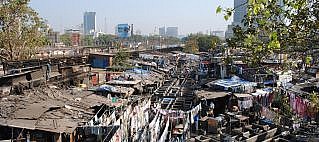“Seeds of rural recovery: States must consider accommodating returnee migrants in small-farming"
About the authors
Mr. Pranab R. Choudhury is the Founder-Coordinator of NRMC Centre for Land Governance|
Dr. Arabinda K Padhee, IAS & Country Director- ICRISAT
Opinions are personal
This article was earlier published in Financial Express.
The Covid-19 pandemic has added a new dimension to the agriculture sector’s woes. Small and marginal farmers, landless agricultural labourers, and informal workers are the hardest hit. The ongoing national shutdown may affect farm operations if measures announced by the government aren’t implemented seriously, and corrective action taken.
That the present crisis will have a profound impact on the economy and food security is a foregone conclusion. Welfare governments, both central and states/UTs have done well to declare agriculture as an essential service, and come out with financial packages and social security measures.
As the corona crisis coincides with the rabi harvest/preparation for kharif sowing season, its impacts on food production and movement through the value chain loom large. During the lockdown, constrained labour movement has already adversely affected farm operations in parts of north-west India. States, civil society and businesses are now gearing up to minimise impact, and hope to sail through on good seasonal bounty.
Small and marginal farmers remain the dominant food producer and major workforce in India, and the country would rely on them to contribute to the post-pandemic revival. However, so far, they remain invisible in the current discourse, due to their informality, as well as political and digital inability.
Small and marginal farmers constitute more than 85% of farm household,cultivate about half of all farmlands as per Agriculture Census, 2015-16, and produce about 60% of farm goods, critical to India’s food security. They also constitute the biggest group of India’s poor and most food insecure. But, small farming remains adaptive, making this group the most important constituent of farm debate in the Covid-19 context.
A key trigger of growth of informal workforce is rural land tenure informalities embedded in rural landlessness, and all-pervasive agricultural tenancy and sharecropping. Agriculture workers represent half of the informal workforce. It is now being discussed that a number of migrant workers who fled the big cities may never return, preferring to find work on their marginal farms or in nearby towns.
Rural India, especially the farm sector, therefore, must prepare to productively absorb these additional labour. India’s small farms may be able to productively engage them, as they are extended enhanced tenure security, which can trigger farm investments, ‘sustainable’ intensification and diversification.
Tenancy has risen over the last few decades despite post-independence land reforms banning this. Nearly 2.1 crore households in the country cultivate 1-1.1 crore hectares of land on informal lease basis as per 70th round of NSSO. Tenants remain more vulnerable to and impacted by disasters and crop loss, both under fixed term tenancy and sharecropping.
NITI Aayog came up with the model Land Leasing Act in 2016, which encourages states to legalise land tenancy, benefitting both tenants and landlords. Post-pandemic, states must consider accommodating returnee migrants in small-farming by legalising and implementing leasing reforms. In the absence of tenancy documents, benefits of schemes under the Centre’s Rs 1,70,000 crore relief package may not reach many among the needy. Land-leasing reforms and documentation can aid more inclusive delivery of public service entitlements to these vulnerable tenants, critical to trigger rural revival.
Along with flattening the corona-curve, states must also prepare to downsize the post-pandemic impact, and begin working on revival strategies—ironically, India’s informal labour, apart from being most vulnerable, holds the key to this. Informality of labour is linked to informality around land relations; post-pandemic farm growth hinges on strategic action on land leasing reforms. With options and experiences around leasing reform already available, the political will and bureaucratic expediency will demonstrate how much India cares about its small farmers, when planning food security.




